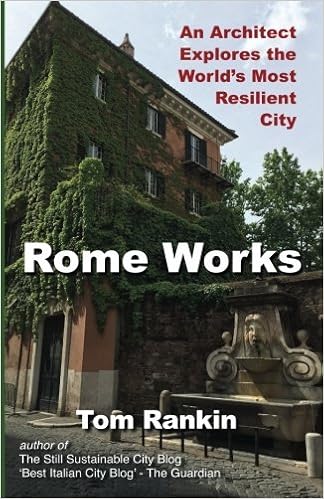Peak Auto in Barcelona and Rome
In Barcelona this weekend I was particularly attentive to transportation, to the function of transit in rejuvenating this great Mediterranean city. In the Catalan capital, unlike Rome, it is clear that the moment of what Newman and Kenworthy call “Peak Car Use” has come. There are far fewer cars on the streets than there were 20 years ago when I first visited, and a majority of the streets of the historical district are completely free of motor vehicles. Where there are cars, they are parked neatly below ground or in a few appointed on street spaces. The global effect on the city is that mobility is a reality of every day life, not a challenge to be avoided whenever possible. The local effect is that the city’s public places are not dominated by private automobiles as they are in Rome, but kept free and safe for people.
How did Barcelona achieve this? A modern metro, yes, but also a decent bus system with dedicated lanes and well-designed, well-informed bus stops, trams, funiculars, and a world-famous bike sharing system that works. The key is an integrated system using technology wisely.
Is it perfect? In 4 days I experienced a few glitches. I waited for a bus that never came, apparently because of a demonstration, and had my valid bus pass refused by a machine (demagnetized perhaps) but replaced by friendly transit officials. I would have liked to try the bike-sharing system but it is aimed at residents only, unlike the one in Minneapolis that anyone with a credit card could use. On the whole, it was adequate and in some cases, like the smooth, silent tram that glides down Diagonale, it was exceptional.
Is such a vision possible for Rome? It’s easy to point to the structural problems of Rome’s archaeology and history and geology and accept defeat, but the fact is that all these problems could be overcome if only we could sweep aside corruption and incompetence and vote or hire administrators capable of the task. As they did in Barcelona, resulting in rejuvenation, a lot of new construction which is fantastic to see (and use because much of it is public and shared). The advances made in Barcelona, to its transit and otherwise, are good for the city, and usually, not always, done with the participation of citizens.
Returning to Rome it is exciting to anticipate that these improvements will take place here and this generation of professionals, activists, and administrators– those who opt not to abandon ship and head for more advanced cities like Barcelona or London– will be here to make it happen. My videos from Barcelona are now available at the sustainable rome youtube channel


